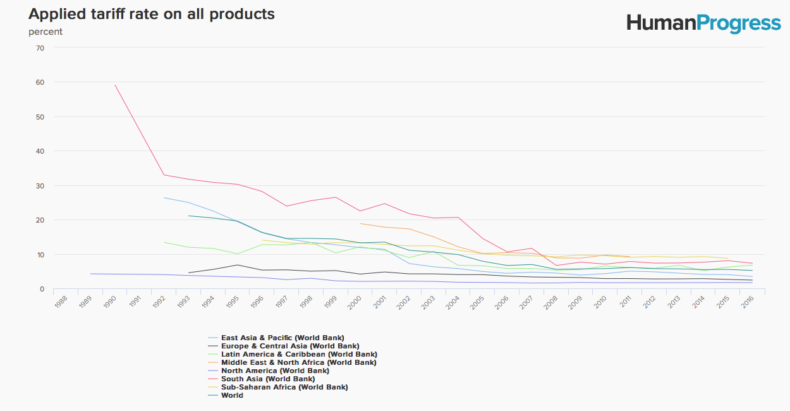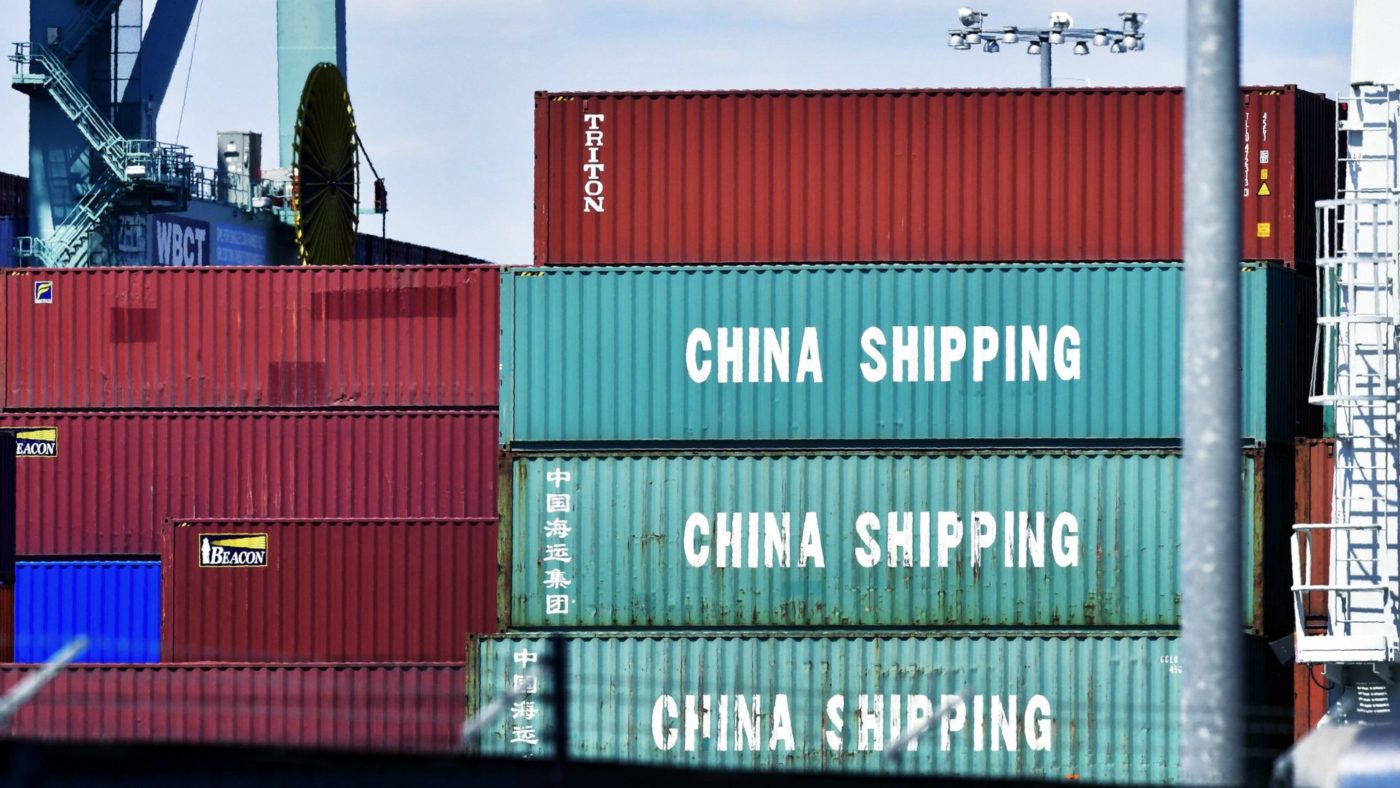Since becoming US President in January 2017, Donald Trump has pursued an aggressively protectionist trade agenda. Some hope that Trump’s tariffs on imports from overseas will force America’s main economic competitors, including China and the European Union, to lower their tariffs on US goods.
Others worry that Trump is a dyed-in-the-wool protectionist who sees international trade as a zero-sum game, where one party must, by necessity, lose to another. Whatever the case may be, Trump’s policies could undermine the hard-won global consensus in favour of free trade and even destroy the global trading system altogether.
It is, therefore, worthwhile to remind ourselves of the benefits of free trade and of the progress that humanity has made in reducing global tariffs in recent decades. There are at least three main economic benefits to trade. First, it improves global efficiency in resource allocation. An additional ton of corn may be of limited value to a farmer in Iowa, but it is immensely valuable to the people in drought-stricken South Sudan.
Trade delivers goods and services to those who value them most. Trade also allows partners to gain from specialising in producing those goods and services they do best. Economists call that the law of comparative advantage. When producers create goods they are comparatively skilled at, such as Germans producing beer and the French producing wine, those goods increase in abundance and quality.
Moreover, trade allows consumers to benefit from more efficient production methods. For example, without large markets for goods and services, large production runs would not be economical. Large production runs, in turn, are instrumental to reducing production costs. Lower production costs lead to cheaper goods and services, which raises real living standards.
Historically speaking, trade was never free. In the past, governments used tariffs on imports to protect their domestic industries from foreign competition. As a consequence of protectionism, economic growth in general and welfare of the poor in particular, have both suffered.
“On the poverty front, there is overwhelming evidence that trade openness is a more trustworthy friend of the poor than protectionism,” noted the famed Columbia University economist Arvind Panagariya. “Few countries have grown rapidly without a simultaneous rapid expansion of trade. In turn, rapid growth has almost always led to reduction in poverty.”
Fortunately, tariffs have been declining in recent decades. The chart below shows reduction in applied tariffs, which are the taxes that countries actually apply on imports. They are not to be confused with bound tariffs which denote the maximum taxes on imports countries can impose under international trade conventions.

As can be seen, with an average population weighted tariff of 57 per cent, South Asia was the world’s most protectionist region in 1990. Since then, the region has reduced its tariffs to about 7 per cent. Globally, tariffs have fallen from about 21 per cent in 1993 to five per cent in 2013.
Even sub-Saharan Africa has reduced its tariffs from 15 per cent in 1996 to 9 per cent in 2013. Europe, North America and East Asia continue to be the leaders in tariff reduction, though no region is fully exempt from implementing non-tariff restrictions on trade, including import licenses, production standards, phytosanitary requirements, administrative and bureaucratic delays, and foreign exchange controls.
What was the result of those tariff reductions? According to Max Roser from Oxford University, “In 1990, there were 2 billion people living in extreme poverty. With a reduction to 705 million in 2015, this means that on average, every day in the 25 years between 1990 and 2015, 137,000 fewer people were living in extreme poverty.”
That progress did not come, contrary to Trump’s oft-repeated assertions, at the expense of the people in rich countries, including the United States. In 2017, the US gross domestic product per capita increased to an all-time high of $59,532 and the median US household income rose to a record $61,400. Moreover, the US.
Census Bureau also reported that the American poverty rate declined to a level last seen in 2006. Yet protectionism cannot be credited with America’s strong economic growth in 2017. Trump’s protectionist measures did not kick in until January 2018, when the U.S. imposed tariffs on washing machine and solar cell imports.
Since that time, the Trump Administration has imposed tariffs on imported steel and aluminum from all nations, including China. In June, the United States imposed tariffs on $50 billion of Chinese imports. In September, the US. imposed a 10 per cent tariff on an additional $200 billion of Chinese goods.
The measure will start on September 24 and last until the end of 2018. The tariff will rise to 25 per cent in 2019. The Chinese have, of course, retaliated with tariffs on goods from the United States. President Trump should take pride in those economic policies, including corporate tax cuts and deregulation, which helped to unleash the true economic potential of ordinary Americans.
A trade war with China has the potential to put an end to America’s economic expansion and complicate the lives of millions of Americans. Surely that is not a legacy that Trump desires.


